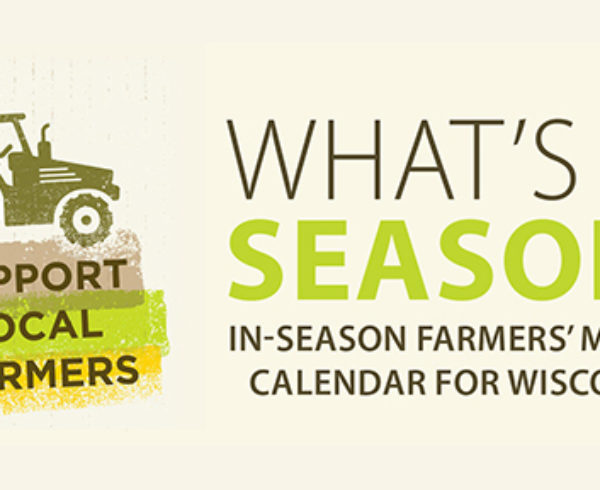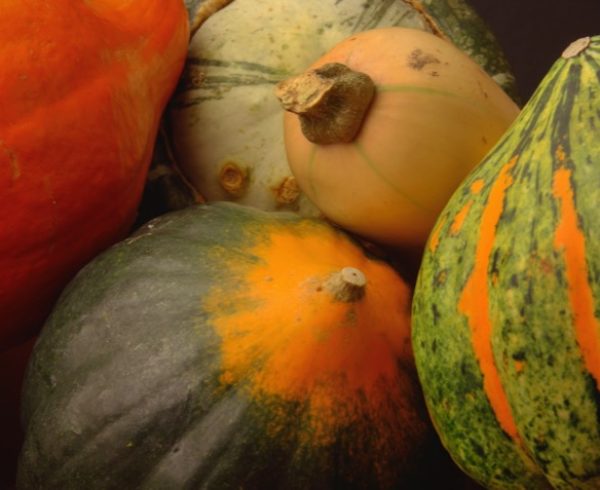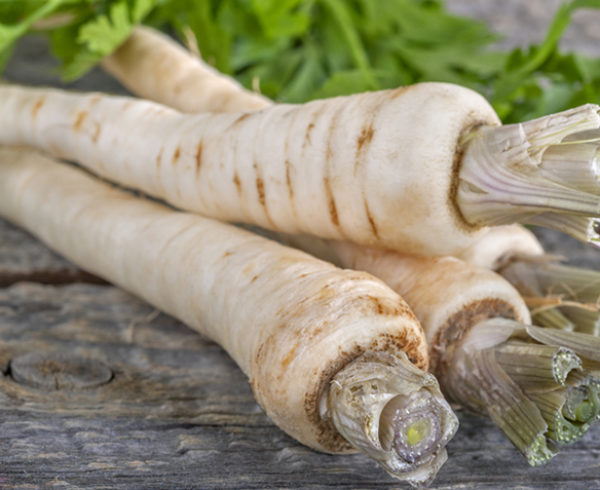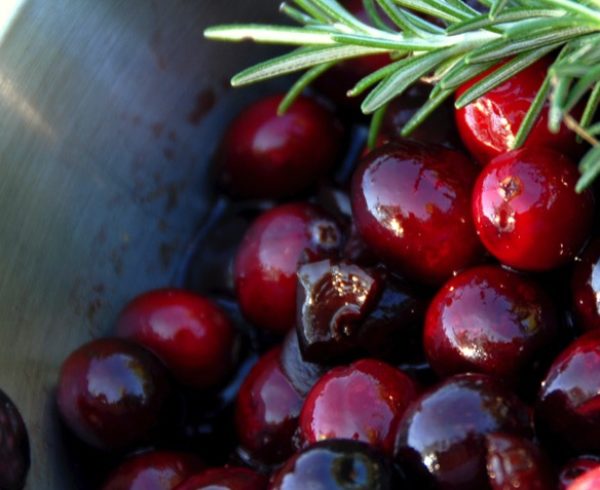This cylindrical, knobby cabbage-like vegetable with long, skinny “arms” of leafy greens can be somewhat of a mystery, so let’s talk about how to use kohlrabi.
Seasonal Availability:
In Wisconsin, kohlrabi start to be harvested mid-June throughout the summer into October. Don’t be fooled by its unusual appearance—kohlrabi is incredibly versatile!
Health Benefits:
This vegetable is rich in vitamin C (and other antioxidants) and vitamin B6 (which supports immune health and red blood cell production), and is also a good source of the mineral potassium.
How to Select:
You will find kohlrabi in pale green and purple—select the ones with the brightest color that are free of blemishes. Note that large ones can be unappealingly woody or spongy, so select ones approximately the size of a baseball.
How to Store:
If the stalks and leaves are attached, you should remove them before storing the vegetable in plastic bags in the refrigerator—where it will last a week or so.
How to Prepare:
The taste and texture are similar to broccoli stems and cabbage, although sweeter and not bitter. After trimming the stalks and leaves, peel the thick skin from the bulb with a paring knife—removing about 1/8 inch of the vegetable until only the white flesh remains. The skinny “arms” of leafy greens are also edible. The leaves and stems of kohlrabi cook similarly to collard greens and can be sautéed or added to salad. Raw kohlrabi flesh is crisp like apple or jicama and makes a great, crunchy addition to salads. The flesh of kohlrabi can be boiled, steamed, stir-fried, grilled, braised or stewed. Also consider adding it to a pan of root vegetables and roasting in the oven.
Recipe: Kohlrabi and Beet Slaw
Don’t grate the Kohlrabi because it loses its crunch; the beets, however, benefit from being broken down a little more.
Ingredients
- 2 small kohlrabi, peeled and julienned (cut into short, thin strips)
- 3 small yellow beets, grated
- beet greens, minced
- 1 shallot, minced
- 1 lemon, juiced
- 1 tablespoon apple cider vinegar
- olive oil
- salt
Preparation
Combine all the slaw ingredients in a bowl. Then, leave to marinate for 5 minutes or so. This slaw works great to accompany steaks, pulled pork, or grilled meats.
Recommended reading:
Cook’s Illustrated takes the mystery out of kohlrabi with their Kohlrabi, Radicchio and Apple Slaw, and Creamy Kohlrabi Soup recipes in Vegetables Illustrated, available through the Hudson Public Library system.
What about you?
Have you used this mysterious vegetable before? What are your favorite kohlrabi recipes? Share on our Facebook page!
Want to see more local, fresh produce in your fridge? Consider becoming an owner of the Hudson Grocery Cooperative—which will be a locally-owned, full-service grocery store that offers diverse food and product choices including organic, sustainable and regionally sourced options for our community.
Image and recipe credit: Welcome to the Table







Leave a Comment